15+ Health Benefits of Green Smoothies (Adults and Kids)
Smoothies are great for a quick and easy breakfast or snack, but there are a few tricks to making green smoothies both healthy and delicious. Don’t miss this list of the health benefits of green smoothies, including which ingredients to use, how to pick the best blender, plus a recipe for a basic green smoothie.
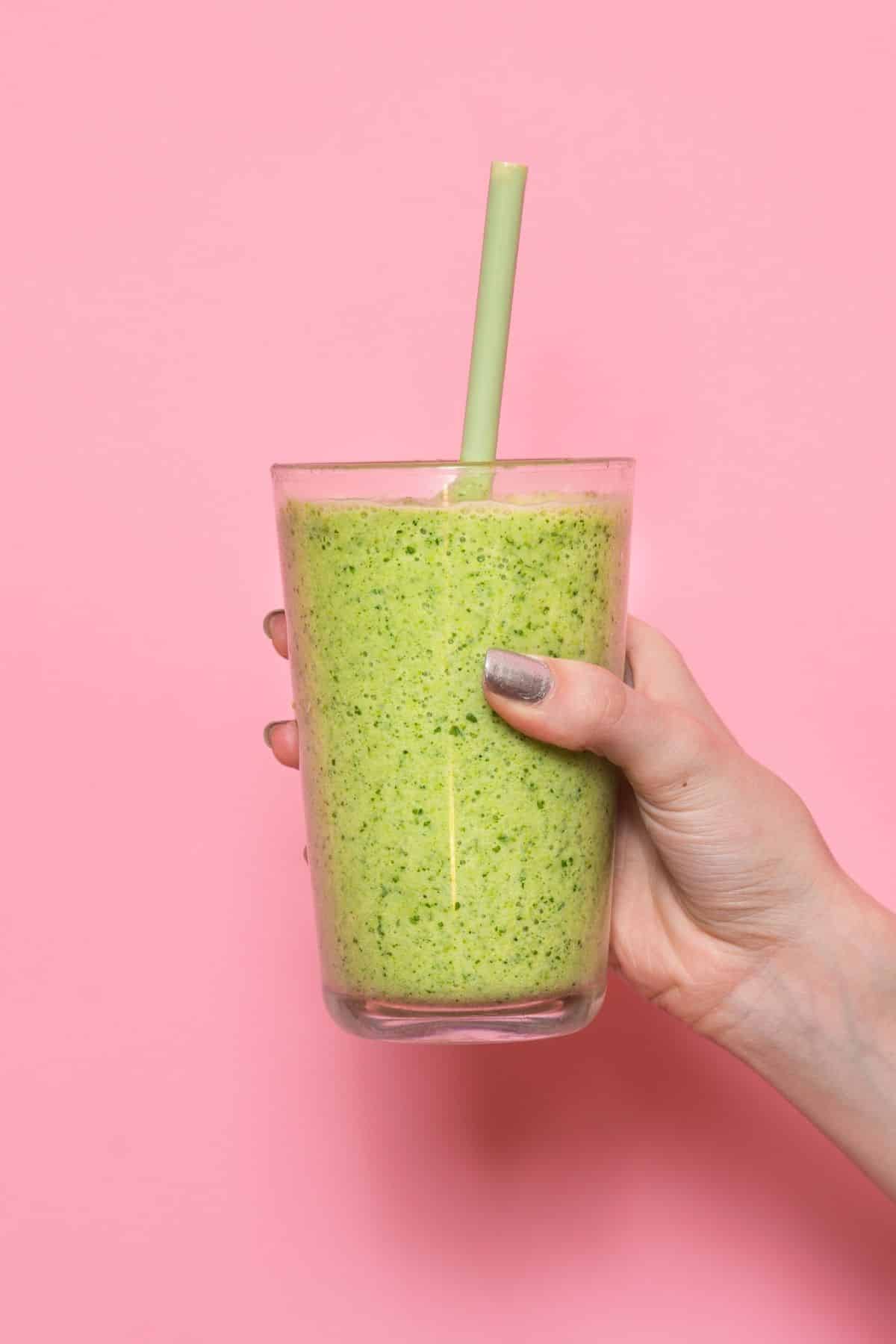
Ask any person into wellness what is the best way to get a bunch of fruit and veggies into your system, and he or she will suggest a green smoothie.
Green smoothies are a great way to pack a meal full of nutrient-dense foods, especially for picky eaters who struggle to eat enough produce. The most healthy and nutritious greens smoothies are ones that include at least one vegetable in the recipe.
In this article, I’ll share exactly what the potential healthy benefits of drinking these green drinks are, plus some of the potential negative effects to look out for.
What are Green Smoothies?
While most smoothies contain at least one serving of fruit, green smoothies also have the addition of some kind of vegetable, usually a leafy green veggie.
The most commonly used leafy greens in green smoothies include spinach, kale, Swiss chard, collard greens, or mixed greens.
See my list of the best greens for smoothies and the best green vegetables.
You might automatically assume that something green is good for you, but the healthfulness of smoothies can be debated. It is important to remember that everyone is an individual, and smoothies may work for some and not for others.
Let’s review both the potential health benefits and risks of drinking green smoothies.
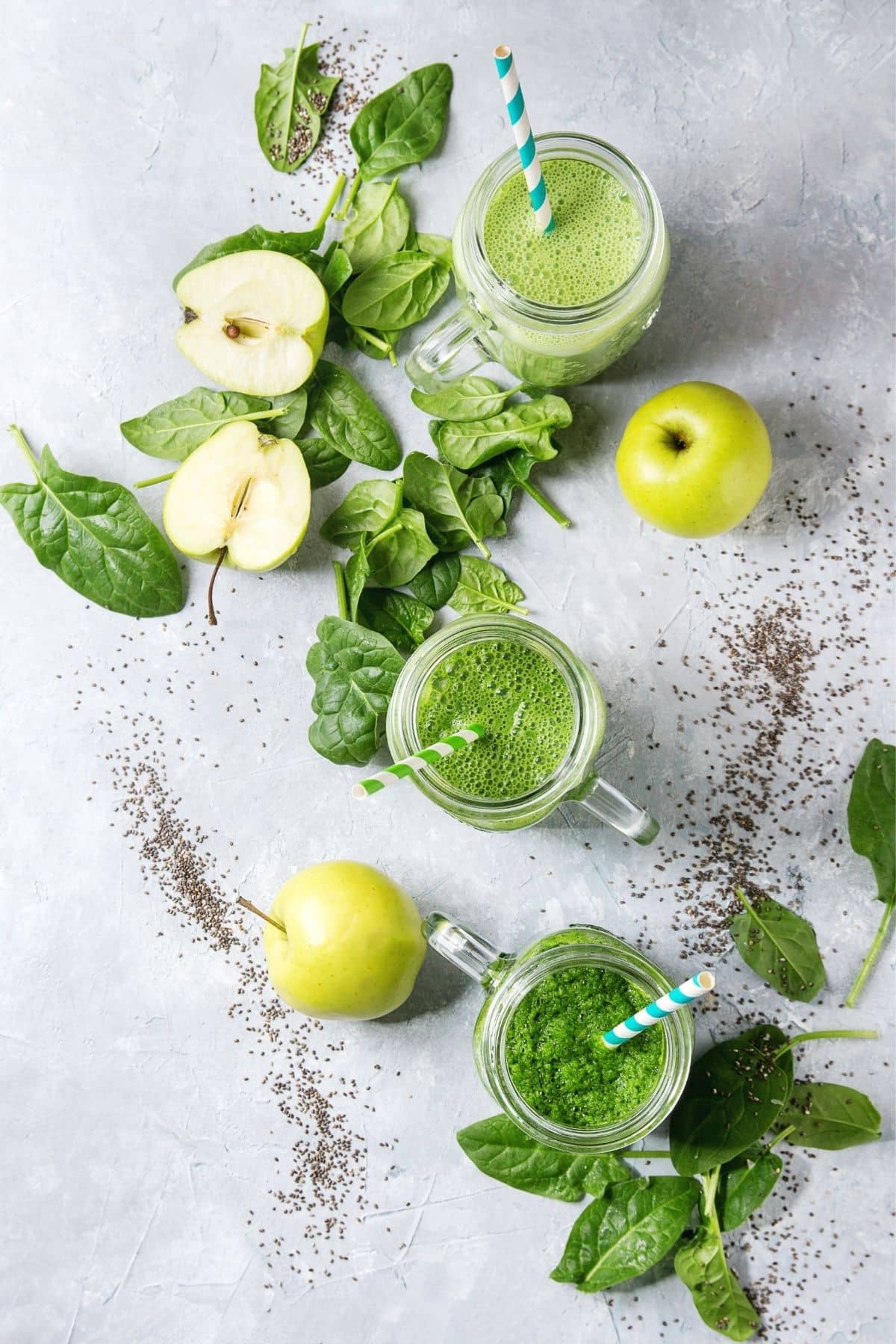
15+ Potential Health Benefits of Green Smoothies
If you’re new to a green smoothie diet, then here are some of the potential benefits you can expect from incorporating at least one green smoothie into your diet a day.
If you have questions about whether or not smoothies are right for you and your individual situation, please consult your healthcare provider.
1. Increased vegetable intake
Most people don’t get enough fruits or vegetables in their diets. If you’re not used to eating vegetables, they can taste bitter. And, a lot of people have texture aversions to eating fresh fruits.
A smoothie is a great way to increase your intake of both fruits and vegetables, especially leafy greens. You can pack a lot of of veggies into a small smoothie and chances are you won’t taste them, especially if you also blend frozen fruit with the greens.
Green smoothies can be a perfect food on a dysphagia diet or soft food diet as well. This is because they are easy to drink and swallow.
For instance, my Peanut Butter Cauliflower Smoothie tastes just like a milkshake, but with a whole serving of veggies.
2. Easily absorbed nutrients
Making a smoothie is essentially a way to make your food easier to digest.
Pureeing your veggies in a blender can help break down the fiber and cellulose to make them more easily digestible. This means more bioavailable nutrients, so you get more out of what you’re eating.
And, if you include healthy fats in your smoothie like avocado, coconut, and nuts or seeds, then you’ll absorb even more of the nutrition from the fruits and vegetables that you’ve included in your smoothie.
See my Anti-Cancer Green Breakfast Smoothie for a great recipe that is super healthy.
3. Hidden veggies for picky eaters
Get your kids into the habit of consuming smoothies. You can toss in a bunch of greens and veggies and they won’t object to the taste since it’s masked by the fruit.
Smoothies are also great for picky eaters or supertasters who are especially sensitive to any bitterness or strong flavors of whole vegetables.
See my entire list of the best vegetables for picky eaters.
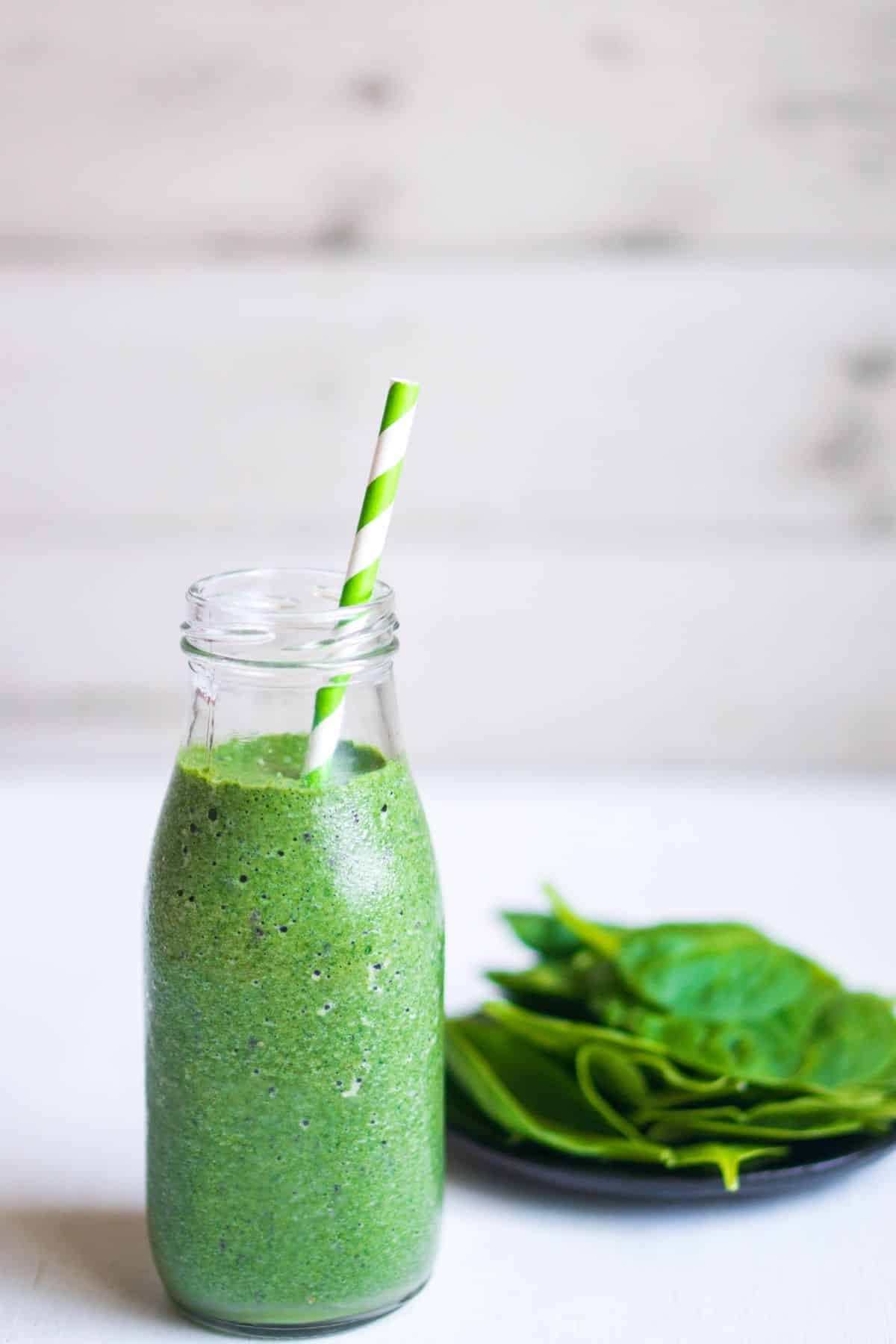
4. Increased intake of antioxidants
Antioxidants are compounds that help to protect the body from damage caused by free radicals.
Green smoothies blended with leafy green veggies are a great source of antioxidants, which can help to reduce the risk of chronic diseases, such as cancer and heart disease.
To ensure the maximum intake and absorption of antioxidants and other nutrients in your smoothies, be sure to always include at least 1-2 tablespoons of a healthy fat in each serving. Healthy fats such as avocado, coconut oil, or nuts and seeds help your body to absorb nutrition.
For great recipes using hemp seeds, try my Moringa Smoothie or my Kale Berry Smoothie.
5. Increased fiber consumption
Green smoothies are a great way to add fiber to your diet or to that of your kiddos. Fiber is essential for maintaining healthy digestion and preventing constipation.
I even have a Constipation Smoothie recipe using beets and chia seeds that you can make specifically to help move your digestion along.
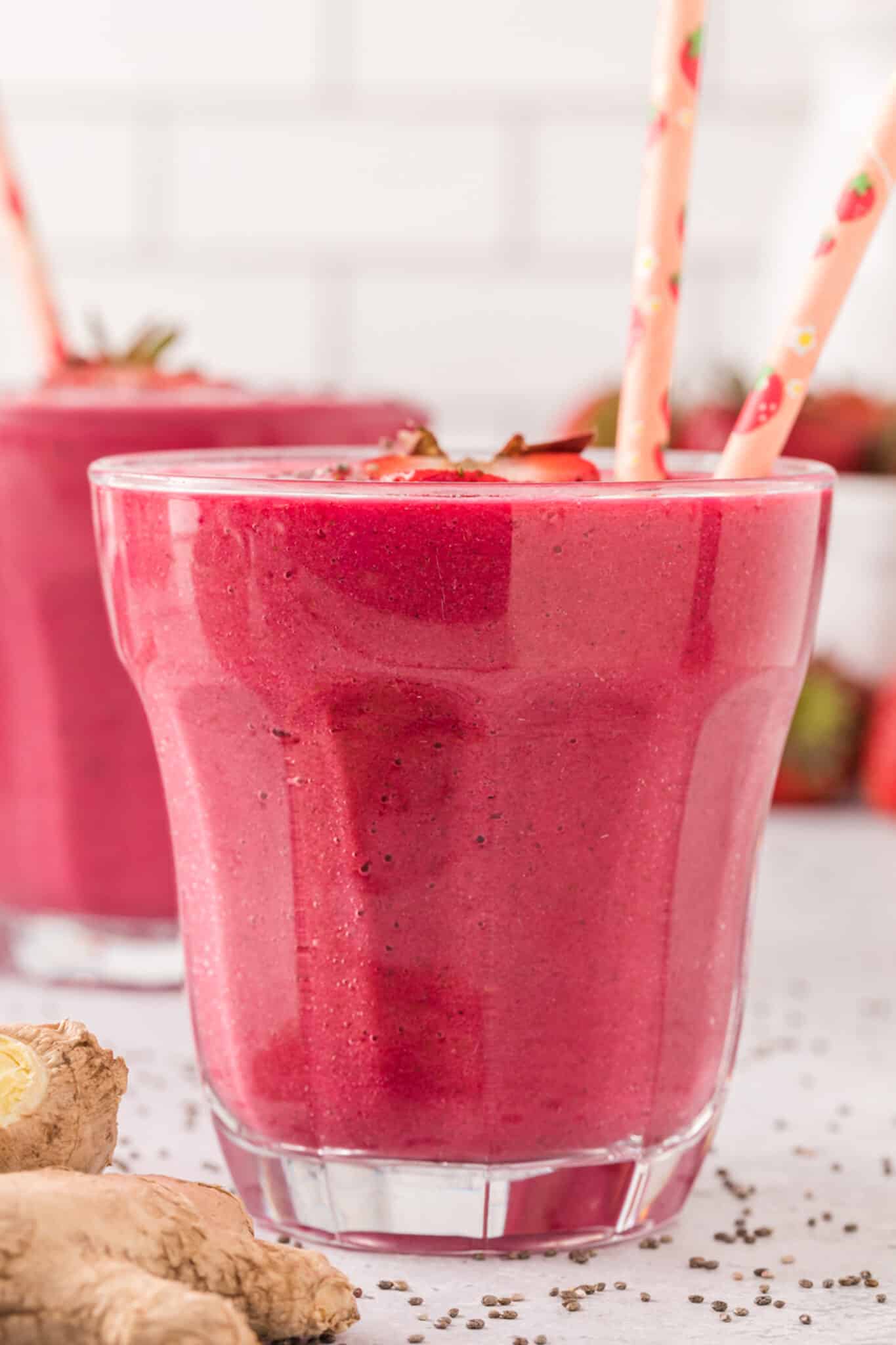
6. Immune boosting powers
Green smoothies are rich in vitamins and minerals that are essential for maintaining a healthy immune system. These nutrients help to protect the body from illness and infection.
You can optimize your green smoothies for immune health by specifically adding nutrient-dense immune-boosting foods such as ginger, turmeric, yogurt, citrus fruits, green leafy veggies, probiotics, and more.
See my related article on the best foods with natural probiotics.
7. Easier weight loss and weight management efforts
Green smoothies can be a great way to add nutrient-dense foods to your diet without consuming a lot of calories. They can also help you feel full and satisfied, which can help you to eat less throughout the day.
Don’t be tempted to skip meals when you’re watching your weight or trying to lose weight. Instead, try swapping out at least one meal with a nutrient-packed green smoothie.
As long as you balance the ingredients so there is a balance of carbs, protein, and fat, then your smoothie should keep you full and satisfied.
Try my Strawberry Protein Smoothie for a recipe with 25 grams of protein in one serving!
See more of my healthy weight loss tips for women.
8. Improved skin clarity
Green smoothies are rich in vitamins, minerals, and antioxidants, all of which can help to improve skin health and reduce the risk of skin cancer.
You can also improve your skin’s appearance by adding ingredients like collagen protein (see my guide on using collage protein).
You may also want to try a recipe like my Sweet Potato Smoothie that includes a ton of beta-carotene which is known to help make skin appear nicer.
9. Increased energy
Green smoothies are a great way to get a variety of nutrients into your diet, which can help to improve energy levels and reduce fatigue.
Again, you always want to balance the macronutrients in your green smoothies. This means that you need to make sure that you can some protein, carbs, and fat with each serving. You can do that easily using the Green Smoothie recipe I’ve included at the end of this post.
Use this recipe as a guideline and then add to it based on your own preferences. You might also like my list of the best clean protein powders or the best protein powders for breastfeeding.
And, for my friends who are on a dairy-free breastfeeding diet, don’t miss my round-up of the best Dairy-Free Breastfeeding Smoothies.
10. Better detox capabilities
Green smoothies are rich in antioxidants, fiber, vitamins, and minerals, all of which can help to detox the body and remove harmful toxins.
The nutrition in green smoothies essentially help the body’s own natural detoxification systems. Try my Liver Detox Smoothie for a recipe that aims to specifically support the liver.
You may also like my list of foods that cleanse the liver that you can include in your smoothies.
11. Better athletic performance
Green smoothies are a great way to get a variety of nutrients into your diet, which can help to improve athletic performance and increase endurance.
Try my recipe for this Iron Rich Smoothie which can help pre-menopausal women feel more energetic over time.
You can also try including beets or beet juice which are a known to help with athletic performance into your smoothies. See my recipe for beet juice and my article on the benefits of beet juice.
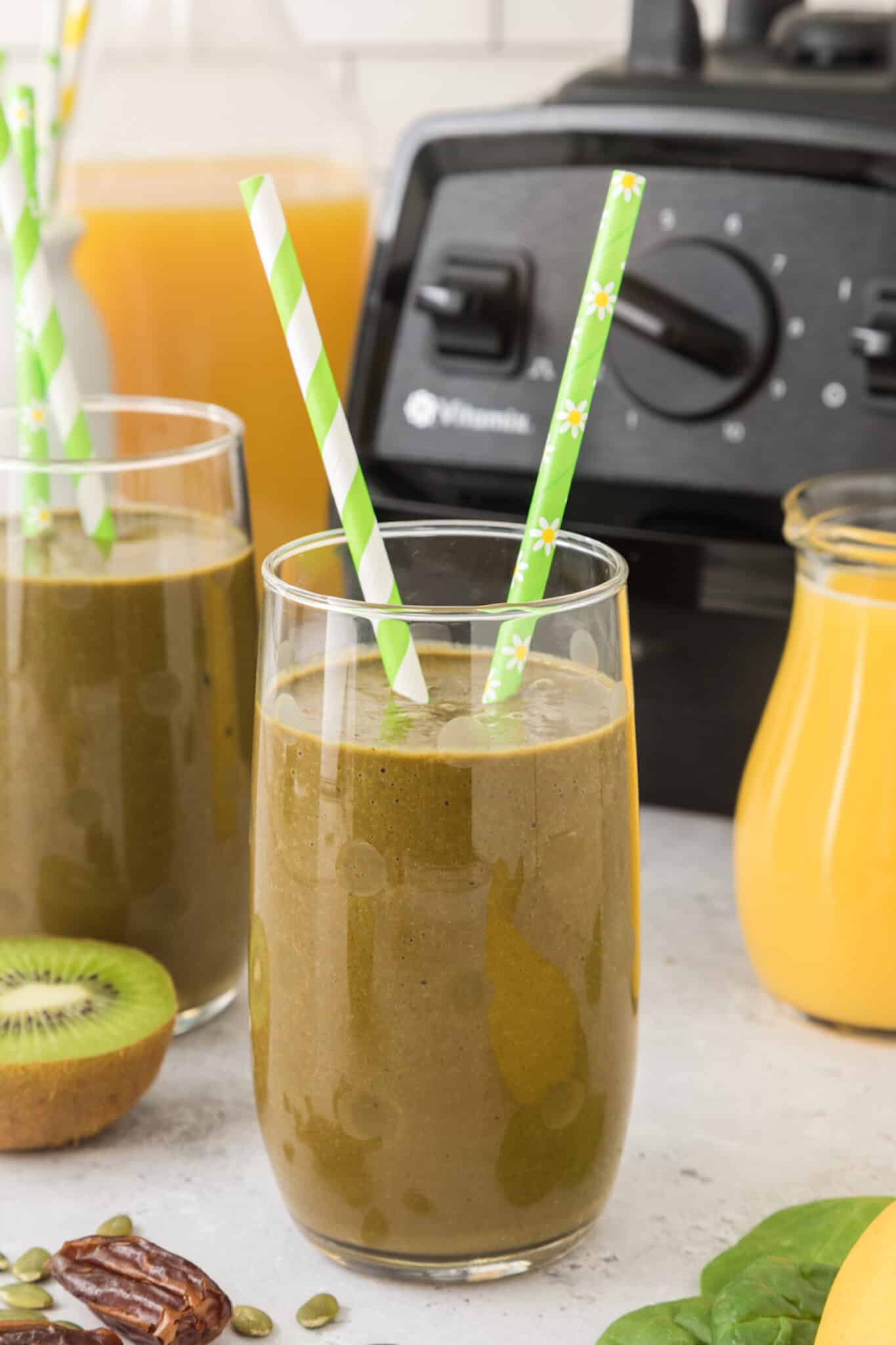
12. Balance hormones
Green smoothies are rich in nutrients that can help to balance hormones and improve overall health. These nutrients include vitamins and minerals such as vitamin B6, magnesium, zinc, and chromium that are essential for hormone production and regulation.
Additionally, green leafy vegetables, fruits and other ingredients used in smoothies such as flax seeds, chia seeds, and maca root are known to help balance hormones.
They are also rich in anti-inflammatory compounds and antioxidants which can help to reduce the risk of chronic diseases related to hormone imbalances, such as PCOS, thyroid disorders, and menopause.
For these reasons, drinking green smoothies on a regular basis may help to regulate hormones and improve overall health and well-being.
See my related articles on how to eat for your cycle and the best hormone balancing supplements. You might also like my articles on the best PCOS diet and best PCOS supplements.
13. Improve bone health
Depending on what types of ingredients you use, green smoothies are rich in nutrients such as calcium, potassium, vitamin K, which can help to improve bone health and reduce the risk of osteoporosis.
These nutrients are essential for maintaining strong bones and reducing the risk of fractures.
Even if you don’t add dairy products to your green smoothies, you’ll likely include green leafy vegetables which are an excellent source of calcium.
14. Better eye health
Green smoothies are also a great source of nutrients such as lutein and zeaxanthin, which can help to improve eye health and reduce the risk of age-related eye diseases.
These nutrients are essential for maintaining healthy vision and reducing the risk of age-related macular degeneration.
One of my favorite tricks for adding natural sweetness to a green smoothie AND greatly increasing the amount of beta-carotene in a smoothie is to use carrot juice as the liquid base. In fact, I do this in my Anti-Cancer Green Smoothie recipe (see all of my cancer fighting smoothies).
15. Cancer prevention
In addition to all of the other benefits listed above, green smoothies may help prevent cancer. You can literally pack almost every cancer-fighting food into a green smoothie.
It would be difficult to eat that many veggies in one sitting, but a green smoothie is easy because everything gets blended into a delicious drink.
Bonus benefits
The potential health benefits of green smoothies just seem to go on and on. Additional benefits include: better lung health, better heart health, better digestive health, and more!
Potential Cons of Green Smoothies
But, what are the risks or cons of a green smoothie diet?
1. Can be tough on digestion
Consuming cold foods and beverages, especially raw vegetables, can cause bloating and discomfort.
Cooking veggies breaks down some of the fiber, as does blending. If you are having digestive trouble but you want to drink a green smoothie, try steaming your veggies before blending. I do exactly this with my guides on how to freeze cauliflower, how to freeze zucchini and how to freeze spinach for smoothies.
It’s also wise to eat, not drink, your smoothies.
Chewing signals the release of digestive enzymes and stomach acid which is important as carbohydrate digestion begins with salivary amylase. Consider your smoothie a full meal, and slowly chew each bite.
You might also want to consider eating more foods with natural probiotics if you are having digestive issues. Add some yogurt (dairy-based or dairy-free) to your smoothie to include some probiotics which may help with digestion.
2. Blood sugar dysregulation
For some people, the large amount of carbohydrates in smoothies may cause a spike in blood sugar.
The fiber is disrupted during blending, which makes smoothies slightly easier to digest, but also increases the chance your blood sugar will spike.
Avoid smoothies full of only fruit and instead focus on including low-glycemic berries, greens, and veggies. You should also add some healthy fats and protein as well.
Healthy fats like avocado can help slow down the metabolism of carbohydrates and keep your blood sugar more stable.
Check out my Avocado Chocolate Smoothie recipe that is full of healthy and nourishing fats.
You can also help make a smoothie more balanced by including a scoop or two of protein powder. See my list of the best paleo protein powders or the best protein powders for pregnancy.
3. Caloric Intake
Because smoothies are a blended concoction, it can be harder to tell how many calories you’re consuming.
A smoothie consisting of just veggies and nut milk will likely be too low in calories, while a smoothie containing multiple tablespoons of nut butter, coconut milk, and fruit may contain too many calories.
When making your smoothie, consider: could I sit down and reasonably eat all of this as a regular meal? If the answer is no, cut back your portions a bit.
4. Oxalate Poisoning & Goitrogens
Certain veggies and fruits (like raw leafy greens and berries) are higher in oxalates and goitrogens, which can cause problems for certain people if overaccumulated.
To get around this potential issue, always rotate your greens and vegetables and try steaming greens or veggies that are higher in goitrogens.
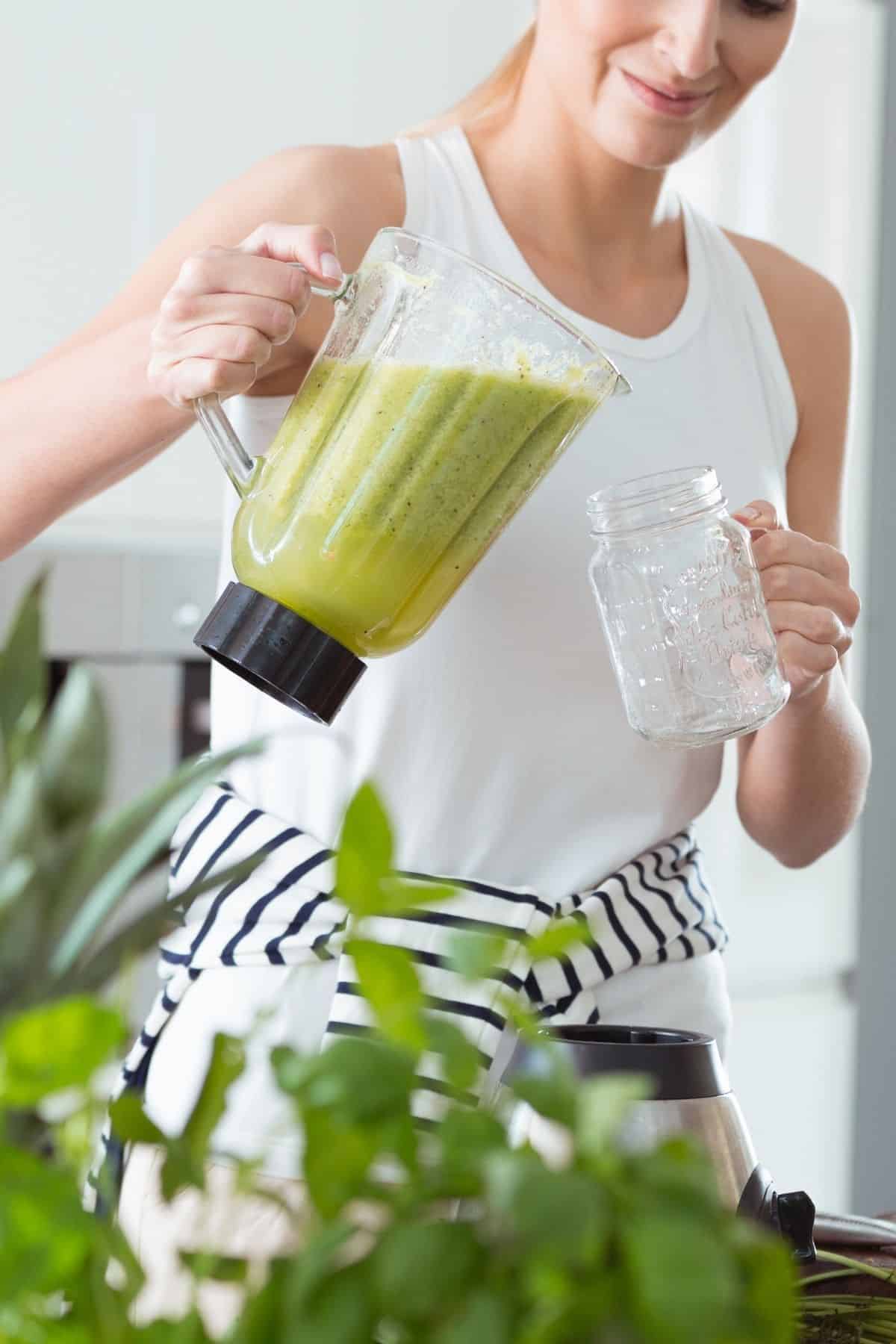
Best Smoothie Blenders
When choosing the best blender for a green smoothie, you have quite a few options. Choosing the best blender depends on what you will be using it for and also what your price range is.
You don’t have to spend a ton of money to make a creamy green smoothie.
Here are the four main types of smoothie blenders for you to consider for your green smoothie diet.
Immersion Blenders
- An immersion blender is also known as a hand blender or stick blender. They’re small handheld motors that blend food directly in a container. Popular for pureed soups, they can also be used for smoothies! Be sure your container is deep to avoid splashback.
- Price range: $30-$115+
- From low-high: Koios, Cuisinart
Single-Serve Blenders
- Also known as smoothie blenders, single-serve blenders are perfect if you only make smoothies occasionally, or if you only need a blender for smoothies. They can be pretty powerful, and some even transform into a drink bottle for quick and easy breakfasts.
- Price range: $15-$125+
- From low-high: Hamilton Beach, NutriBullet, Vitamix single-serve container (for use with a Vitamix Ascent)
Regular Blenders
- These are what you think of as a traditional blender on your countertop. They consist of a motor base, a carafe, and an inner blade. They’re great for occasional smoothie makers but might require some additional prep work or liquid to make a completely blended smoothie. A regular blender can handle multiple serving sizes, but is not consider a high-speed blender.
- Price range: $65-80
- From low-high: Hamilton Beach, Oster
High-Speed Blenders
- High-speed blenders are the cream of the crop–and the most expensive. The price range for high-speed blenders is so wide because quality varies. There are some inexpensive high-speed blenders that do a great job but may burn out more quickly. The most expensive blenders are a multifunctional kitchen tool and tend to last much longer.
- See my related article on How to Juice with a Vitamix!
- Price range: $300-$400+
- From low-high: Vitamix, Blendtec
You may also like my article on the Best Juicer Blenders if you want to juice with your blender as well as make smoothies.
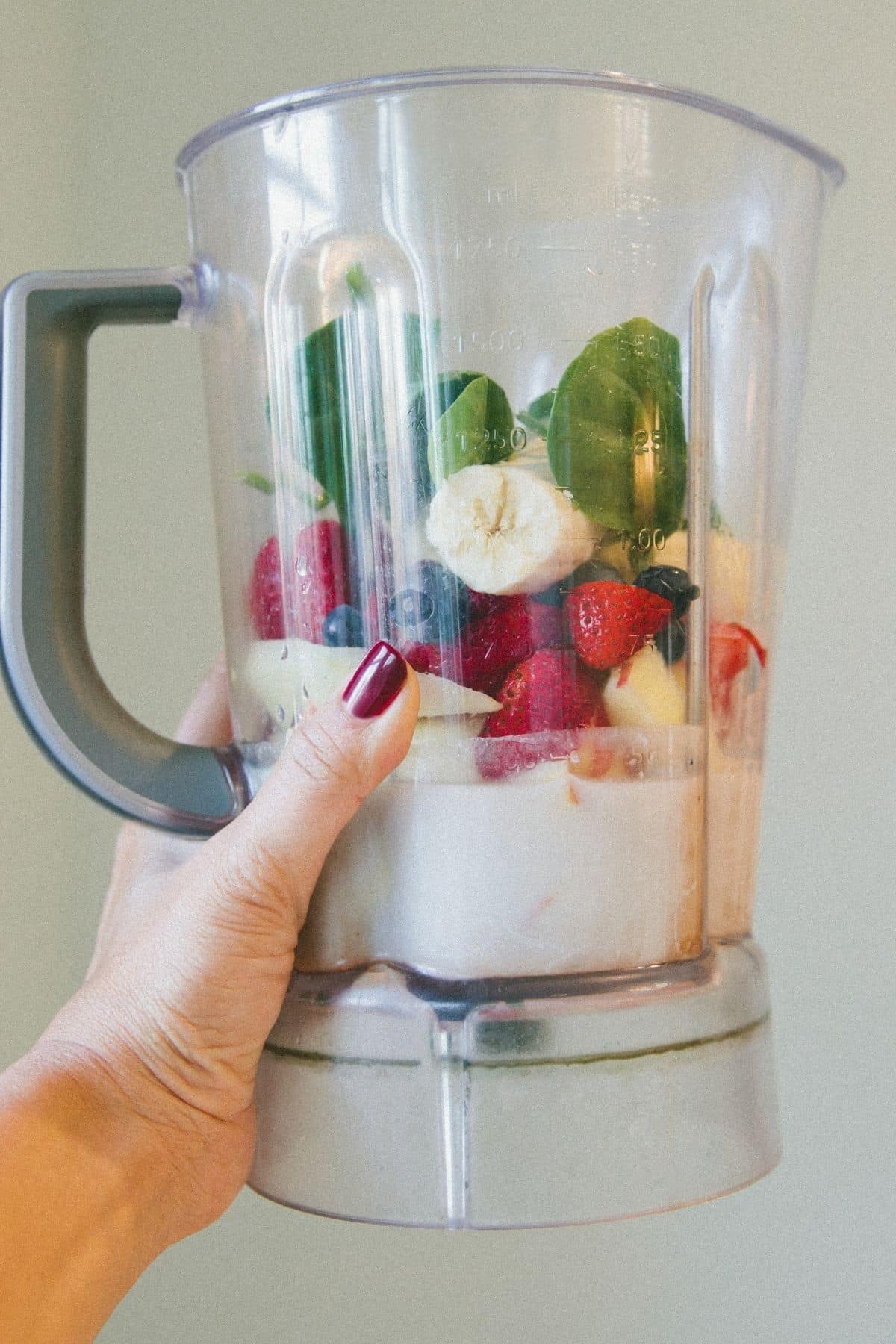
FAQs About Green Smoothies
Yes, you can lose weight by drinking smoothies. Similar to a juice cleanse, a smoothie diet can help reduce inflammation weight and reset hunger signals. Smoothies are generally easier on blood sugar and your metabolism than low-calorie, high-sugar juices.
If drinking your veggies helps you eat healthier and steer clear of processed foods, go for it! Keep in mind, though, that weight loss is not guaranteed on a smoothie diet. Watch the caloric density of your smoothies and be sure you’re eating enough protein and healthy fats for satiety.
The best part of making your own smoothies is having control over what you’re putting into your blender (and your body!) Be creative with your smoothies and feel free to use this guide as a starting point.
Steam your veggies. This helps break down fiber even more, making them easier on digestion. You can steam them in advance and then freeze them if you prefer frozen smoothies.
Add in moderate portions of frozen fruit. Berries are a great choice, and tropical fruits like pineapple can create a sweet treat! Consider glycemic loads when choosing your fruit. Also think about trying to include fruits like bananas, mangoes, pears, and papayas which all have soluble fiber and help make a smoothie creamy, even without dairy. Try this Dragon Fruit Banana Smoothie as an example.
Don’t forget the fat. Increase satiety and nutrient absorption by adding fat to your smoothie. Avocados and coconut milk add creaminess while nut butters and hemp hearts add a slightly sweet, nutty taste.
Avoid sweeteners (including in your nut milk). It’s popular to add stevia, honey, or maple syrup to smoothies but they’re usually unnecessary and may spike your blood sugar. Replace sweeteners with low-glycemic fruits.
Have fun with toppings! Toppings for smoothie bowls (or mixed into your smoothie!) are fun and help you chew your smoothie. Sprinkle smoothies with fresh berries, coconut flakes, slivered almonds, or granola. Keep your portions reasonable, of course. See my list of the healthy smoothie toppings.
Consider add-in items. Make your smoothie a full meal by adding in protein powder or collagen protein. Turn up the fun factor by mixing in adaptogenic herbs, supplements, or trendy items like bee pollen.
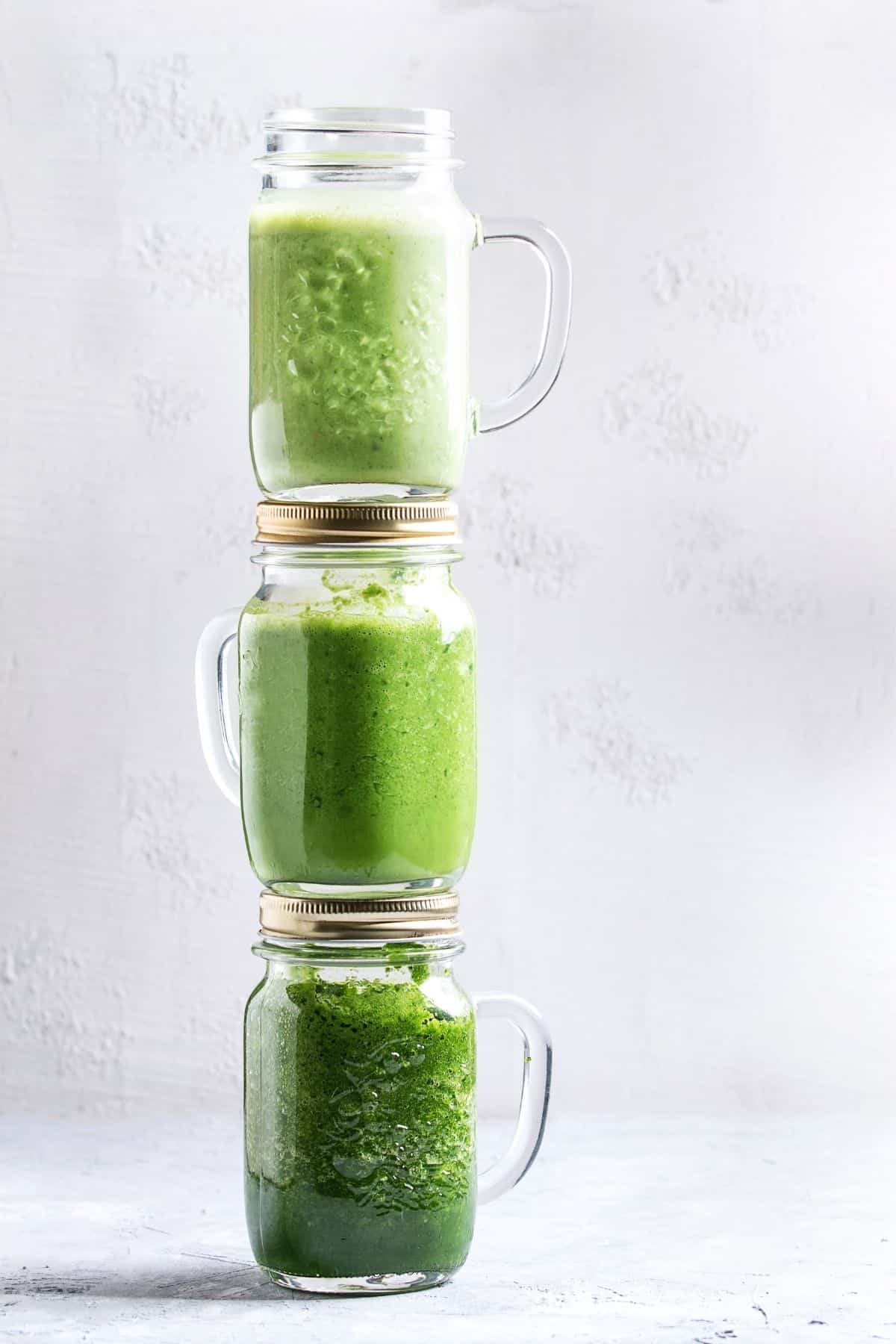
Basic Green Smoothie Recipe
There are an endless number of combinations that you can use to make a green smoothie. But, I have come up with a basic formula that is a great starting point. This recipe uses dairy-free milk as the base, blended with one serving of greens and two servings of fruit.
You can also make your life easier by meal prepping your green smoothies. Freeze spinach for smoothies, assemble the ingredients in the blender the night before, and then just blend and serve the next morning.
More Green Smoothie Recipes You Might Like
- Green Apple Spinach Smoothie
- 1,000 Calorie Smoothie
- Broccoli Sprout Smoothie
- Strawberry Banana Zucchini Smoothie
- Collard Green Smoothie
You might also like my round-up of the best healthy breakfast smoothies or my entire index of dairy-free smoothies.
Even More Smoothie Recipes!
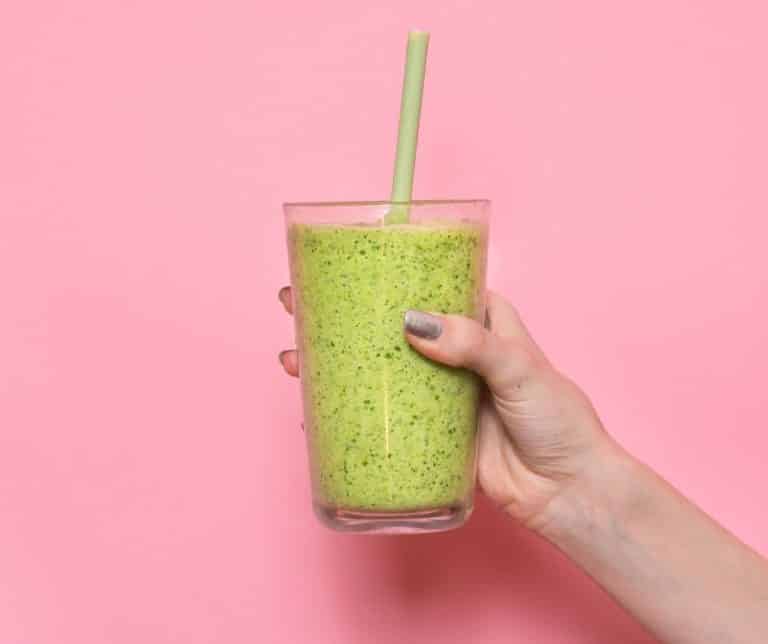
Basic Green Smoothie
Here’s a basic recipe for making a green smoothie that is dairy-free, paleo, and vegan-friendly.
- Total Time: 7 minutes
- Yield: 2 1x
Ingredients
- 2 cups unsweetened almond milk
- 1/2 cup frozen strawberries
- 1 frozen ripe banana, broken in half
- 2 large handfuls baby spinach
- 2 tablespoons almond butter
Instructions
- In the pitcher of a high speed blender, combine the almond milk, strawberries, banana, baby spinach, and almond butter.
- Place the lid on tightly and blend for 45-60 seconds, or until the smoothie is creamy with no chunks.
- Serve immediately.
Notes
- Feel free to get creative with what fruits and leafy greens you use. Frozen cherries, mango, papaya, pineapple, and all types of berries work well. For the leafy greens, you can use kale, collard greens, Swiss Chard, or any type you like. You can even freeze cucumber and squash to put into a smoothie.
- You can also use whatever nut butter you like. You can also use coconut milk, avocado, or seed butters too.
- Store any leftover smoothie in a covered container in the refrigerator for up to 2 days.
- You can also add in protein powder if you want to make your smoothie a meal replacement.
- Prep Time: 5 minutes
- Cook Time: 2 minutes
- Category: Smoothie
- Method: Blender
- Cuisine: Healthy
- Diet: Vegan
Nutrition
- Serving Size:
- Calories: 206
- Sugar: 9.8 g
- Sodium: 200 mg
- Fat: 12.1 g
- Saturated Fat: 0.7 g
- Carbohydrates: 21.5 g
- Fiber: 4.3 g
- Protein: 6.2 g
- Cholesterol: 0 mg
Don’t forget to join my newsletter list to get exclusive clean eating recipes and tips. The newsletter is 100% free with no spam; unsubscribe anytime.
About the Author: Carrie Forrest has a master’s degree in public health with a specialty in nutrition. She is a top wellness and food blogger with nearly 10 million annual visitors to her site. Carrie has an incredible story of recovery from chronic illness and is passionate about helping other women transform their health. Send Carrie a message through her contact form.
Note: this post is for informational purposes only and is not intended as medical advice. Please consult your healthcare provider for recommendations related to your individual situation.


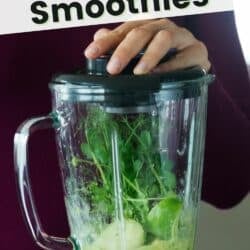
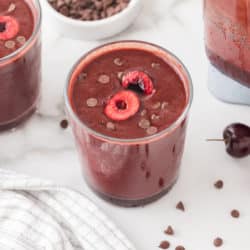
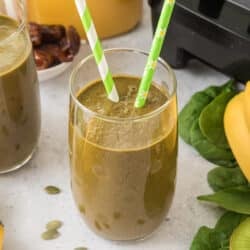
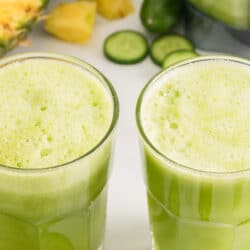
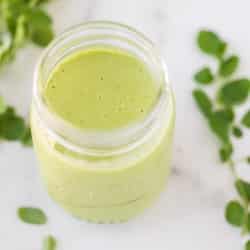




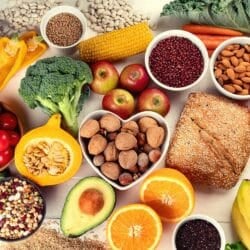


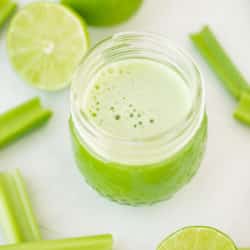
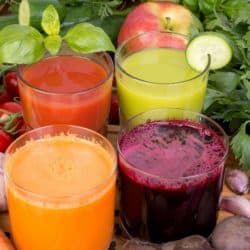





This is my favorite way to make a smoothie. I hope you love this recipe too!
We love green smoothies in our house! Although I usually use radicchio for the superfood health benefits, but also because my daughter likes “pink” smoothies, rather than green. Thanks for the information on all the add-ins though, I hadn’t thought of those.
I love the idea of adding radicchio to a smoothie, Julia, I’ve never tried that before. Thx! 🙂
My favorite green smoothie = spinach, strawberries + bananas!
In addition to my usual base of greens, berries, and seeds, some of my favorite ingredients include ginger, mint, turmeric, matcha, and lime juice (usually not in the same smoothie). Recently, I’ve also been adding avocado, which I luurve. 😉
Love having greens in my smoothies, like Kale or Spinach!
I’m a big fan of cooked beets in my green smoothies, plus loads of ginger and whatever fresh herbs are lying around.
Cooked beets is another smoothie addition I never would have thought of. Thanks Heather! 🙂
I also use SunWarrior and love it, I add almond milk, frozen fruit, lots of spinach and half of a banana. Yum!
I’ve been drinking vegan shakeology, but it’s so expensive (and not so tasty). I’m eager to try the Sun Warrior instead! I like to add cinnamon and vanilla to my smoothies.